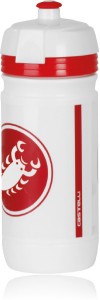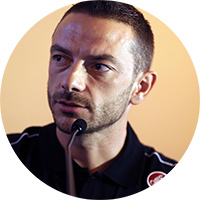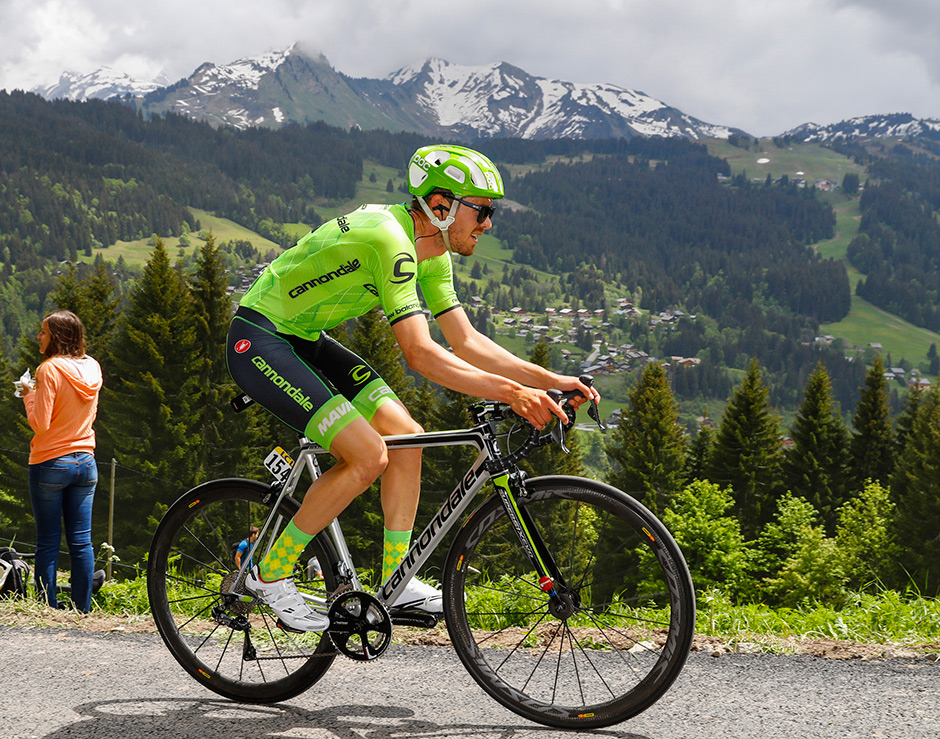The first thing professional cyclists or athletes think when they decide to practice a sport is to focus on that discipline, looking for the most effective way to improve their own performance. But “peak performance” is actually the result of a balanced blend of three important factors: training, rest and nutrition. It is worth nothing here that authoritative scientific studies have shown that nutrition is as important as training, or even slightly more so. We can have our car super tuned for top performance, but if we put in inappropriate fuel, the engine will struggle and perhaps not even start.
A pro rider during the — always extremely challenging — stages of the next Giro d’Italia will need to consider many factors that can increase the need for sugars, such as the weather conditions. He will also need to remember that by two weeks in, he will find it significantly more difficult to start each stage with full muscle glycogen stores — not to mention  that fatigue and inflammation can affect anabolic processes as well.
that fatigue and inflammation can affect anabolic processes as well.
In my profession I always like to begin with an analysis of the specific movement from all points of view and then find the optimal solution to support my athlete in the best way possible. Especially in endurance sports, the right strategy for the nutrition and supplementation plan is to divide the requirements based on the hormonal changes induced by physical activity, so before the activity, during the activity and after the activity.
Many studies show that the important thing to focus on before the activity is starting with full glycogen stores and without major fluctuations in glycemia — that is, the concentration of sugar in the blood — in the three hours before the race. This effect can be achieved by adding protein to the prerace meal. Now even the professional world has adapted to this approach, and we increasingly see that egg whites, eggs or lean cold cuts are being added at the team tables.
During physical activity, the hormonal balance of the body changes, so it is essential to supply a good quantity of fast-absorbing sugars at regular intervals in relation to the intensity and duration of the effort. The sources most widely used by professional cyclists are bars, small sweet or sometimes savory sandwiches, almond paste, or gel and liquid sugars. Today, many professional teams, especially those from the English-speaking world, are doing a very good job with sports nutrition, and fortunately this is leading to a progressive change in the diets of professional cyclists, who have unfortunately been bound by tradition to foods that offer very little in the way of scientifically proven performance benefit.
In the post-race phase, after a demanding stage the pro cyclist will necessarily need to focus the most on recovering what was lost duri ng the effort: water, electrolytes, blocking inflammation, decreasing some catabolic hormones (which break down muscle) and promoting anabolic hormones (which stimulate muscle growth). But above all the rider will need to think about replacing the glycogen stores in the liver and muscles, which are essential for the performance that will need to be repeated the next day.
ng the effort: water, electrolytes, blocking inflammation, decreasing some catabolic hormones (which break down muscle) and promoting anabolic hormones (which stimulate muscle growth). But above all the rider will need to think about replacing the glycogen stores in the liver and muscles, which are essential for the performance that will need to be repeated the next day.
If this approach were followed in a slightly different form by amateurs, for the Maratona dles Dolomites – Enel, nothing would change on a physiological level, because we are still talking about bipedal mammals, but certainly an amateur would most likely not come from 13 consecutive days of competition, but rather from a week of tapering in order to be in top condition for the important race.
In the week of tapering, when the volume and intensity of training are reduced, an amateur rider’s glycogen stores will be easily kept almost always full, and therefore the rider should only be careful not to overload and gain unnecessary weight in the days before the event, perhaps driven by the fear of needing to be “full” to tackle the long race. In reality, if the muscle glycogen stores are full, it’s just like with a car, where continuing to add fuel threatens to overflow the tank; the corresponding physiological mechanism is the retention of water and fat.
For the “before, during and after the race” strategy, there are no great differences in approach — the only difference being that today amateur racers are much more informed and have studied many specialized magazines and books, and so, in some ways, especially in the “during” phase, amateurs are on average much more careful and farsighted than professionals. So, very often, sensible amateurs consume sugars in liquid or gel form during their races, like the professionals do — of course, always interspersed with and accompanied by adequate hydration with electrolytes and water.
In the “after” phase, the main difference between a cyclist in the Giro d’Italia and an amateur who does a single ride or race is that while the professional will use specific supplements (and not just for quick recovery in view of the next major effort), the amateur can also choose, as source of recovery, foods rich in carbohydrates such as grains or also sweets, and thus satisfy his or her cravings for treats that were mostly avoided in the days before the race. So it is increasingly important what we put in our mouths and above all when, because the timing is really critical — before and during and after.
 By Iader Fabbri, athletic trainer and nutritional consultant for all the Italian national cycling teams and Rai Sport commentator on nutrition.
By Iader Fabbri, athletic trainer and nutritional consultant for all the Italian national cycling teams and Rai Sport commentator on nutrition.
iaderfabbri.com
instagram.com/iaderfabbri
THIS AND MANY OTHER ITEMS CAN BE FOUND IN OUR PHOTO FINISH MAGAZINE
Read it on Issuu












2 Comments
While riding on cycle, I mostly face nutrition problem…..I hope the solid tips you provide in this article help me a lot.
Thanks for sharing valuable post.
Cheers!
For all who are going to get a long bicycle ride, nutrition is the vital factor to consider. They must assure their source and way of getting of sufficient amount nutrition. There must be the solutions if they face mild or serious nutrition problem while they are cycling.
Your article is a worthy one. It’s concrete and to the point, as it should be. Waiting for more.
Thank You